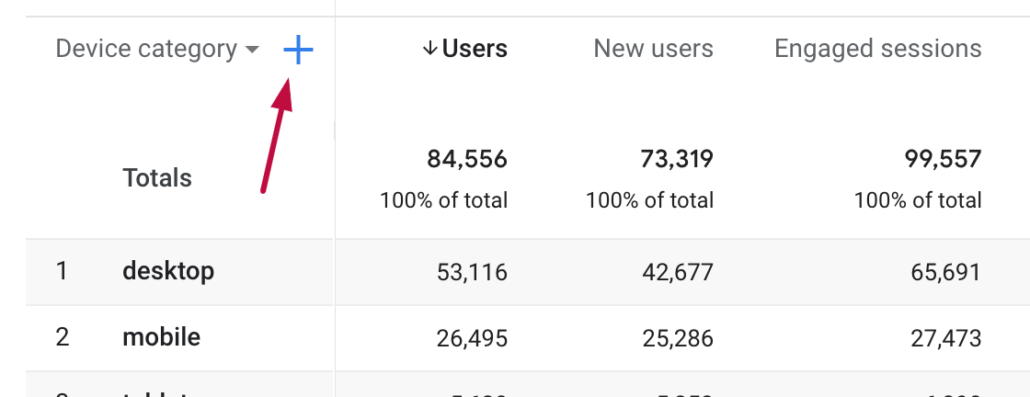Optimize Your Coverage with Secondary Dimension in Google Analytics
Optimize Your Coverage with Secondary Dimension in Google Analytics
Blog Article
Enhance Your Information Analysis Making Use Of Secondary Measurement in Google Analytics
Exploring the abilities of secondary dimensions in Google Analytics opens up a world of opportunities for refining information analysis. The ability to dissect details further beyond the surface area level offers a nuanced sight that can shape critical decisions. By layering added dimensions onto primary information collections, an even more detailed story emerges, losing light on customer interactions and performance indications. This vibrant method to data assessment holds the essential to unlocking hidden patterns and trends that might change just how businesses interpret their electronic footprint.
Understanding Additional Dimensions
Second dimensions in Google Analytics refer to extra specifications that can be added to the key dimension, permitting for an extra thorough evaluation of information (Secondary Dimension in Google Analytics). By integrating secondary dimensions, analysts can sector and filter information to discover patterns, fads, and correlations that could not be noticeable when looking at the information as a whole.

Benefits of Using Secondary Measurements
When evaluating information in Google Analytics, the utilization of second measurements supplies indispensable understandings into customer behavior and performance metrics. By adding a second measurement to your primary information, you can delve much deeper right into the attributes of your website visitors and their communications. One of the essential advantages of utilizing second measurements is the capability to section and compare information a lot more properly. This division permits you to understand exactly how different variables, such as demographics or traffic sources, influence individual actions and conversions (Secondary Dimension in Google Analytics).
Furthermore, additional measurements help in identifying patterns and relationships that may not be right away evident when checking out the data in isolation. This much deeper degree of evaluation can discover beneficial info that can assist marketing methods, site optimization, and overall service choices. Additionally, second measurements improve the context of your key data, giving a more extensive sight of user engagement and efficiency metrics. In general, the usage of second measurements in Google Analytics can dramatically improve the depth and top quality of your information evaluation, resulting in more enlightened decision-making and improved results.
Exactly How to Add Secondary Dimensions
By incorporating second dimensions in Google Analytics, individuals can get deeper understandings right into their information evaluation procedure, permitting for more detailed evaluation of user actions and efficiency metrics. Including second measurements is a straightforward process that can substantially enhance the deepness of evaluation. When in the report, find the "Secondary measurement" tab over the data table.
Analyzing Data With Second Dimensions
Utilizing second measurements in data analysis offers a much more thorough understanding of individual behavior and performance metrics. By including a second dimension to your key information embeded in Google Analytics, you can dive much deeper right into the characteristics of your website site visitors and their communications. Integrating the main dimension of 'source/medium' with the secondary dimension of 'touchdown web page' can disclose which details web pages are drawing in traffic from different sources, aiding you maximize these pages for far better engagement.

Basically, evaluating information with secondary dimensions empowers you to get valuable insights right into customer habits, determine trends, and make educated choices to improve the performance of your electronic homes.
Ideal Practices for Additional Measurements
In information analysis, including second dimensions efficiently can substantially boost the deepness of insights originated from metrics and customer habits patterns. When using second dimensions in Google Analytics or any various other logical device, it is crucial to follow finest methods to make sure the accuracy and relevance of the data analysis.
One trick best practice is to very carefully pick second measurements that enhance the main dimension being examined. Selecting additional dimensions that provide extra context or additional segmentation can use an extra extensive understanding of the data. It is likewise crucial to prevent overcomplicating the evaluation by consisting of way too many secondary dimensions, which may bring about confusion or dilution of insights.
In addition, it is a good idea to explore various combinations of primary and second measurements to reveal brand-new connections and fads. Routinely examining and refining the selection of secondary measurements based upon the particular goals of the analysis can lead to more actionable understandings. By adhering to these finest practices, data analysts can utilize additional dimensions successfully to enhance the general information analysis procedure and decision-making abilities.

Conclusion
In final thought, integrating second measurements in Google Analytics is crucial for an extensive information analysis method. By leveraging second measurements along with main ones, analysts and marketing experts can reveal useful insights and correlations that can inform decision-making and enhance digital advertising approaches. Recognizing just how to efficiently use second dimensions and adhering to click ideal practices will certainly permit professionals to remove purposeful information and improve their general efficiency metrics.
Second measurements in Google Analytics refer to extra criteria that can be added to the primary measurement, permitting for a more thorough analysis of data. By incorporating secondary measurements, experts can section and filter data to uncover patterns, fads, and connections that might not be noticeable when looking at the information as a whole. Incorporating the main measurement of 'source/medium' with the secondary measurement of 'touchdown web page' can expose which certain pages are drawing Click Here in web traffic from different sources, helping you maximize these pages for far better interaction.
One trick best technique is to thoroughly pick second measurements that match the key dimension being analyzed. By following these best methods, data experts can leverage secondary dimensions successfully to improve the overall information analysis process and decision-making capabilities.
Report this page